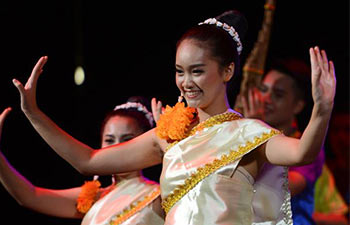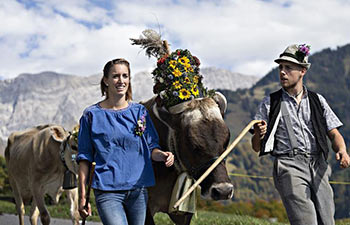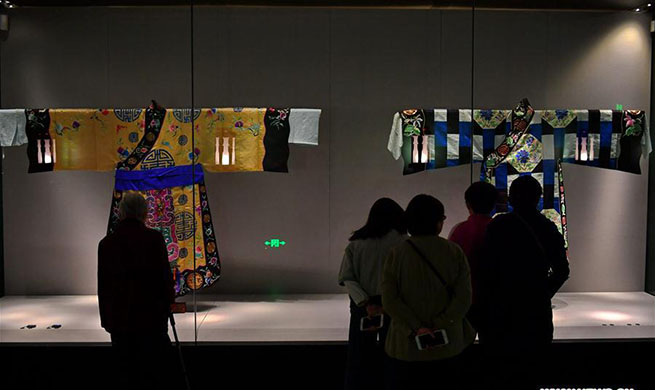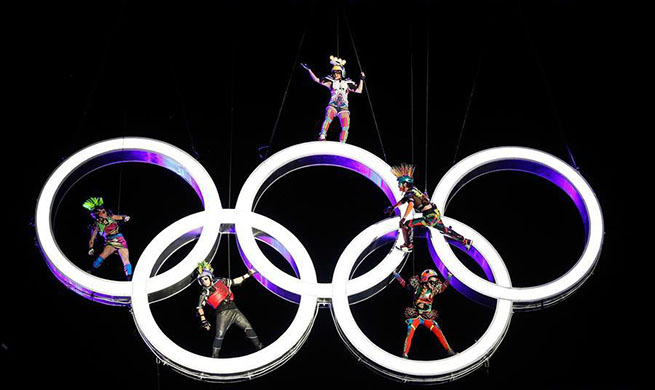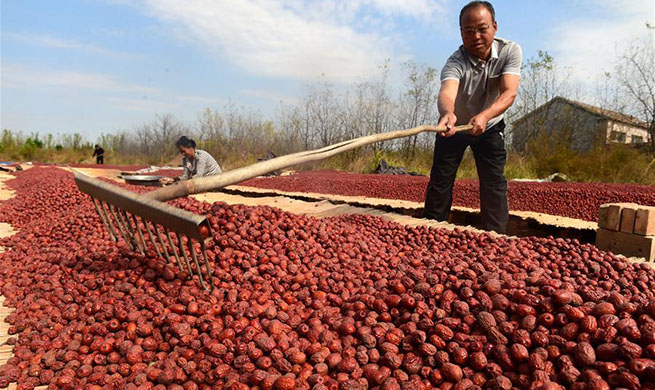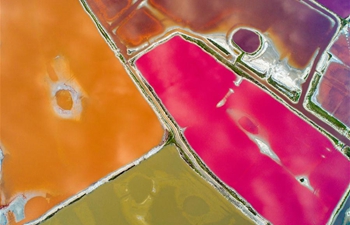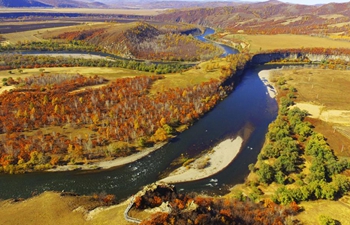BUENOS AIRES, Oct. 7 (Xinhua) -- Young shuttlers from around the world are looking forward to teaming up for the innovative format of badminton group competition - a relay team event - at the Buenos Aires 2018 Youth Olympic Games.
Relay races are common in athletics and swimming, but how will the badminton relay work?
There will be two groups of four teams (made up of four men and four women each). All the players (32 men and 31 women) were drawn into eight groups - called Alpha, Epsilon, Gamma, Omega, Sigma, Theta, Zeta and Delta.
The group stage consists of four teams from each group facing each other in a mixed relay format. Each tie between two teams consists of ten matches: two men's singles, two women's singles, two men's doubles, two women's doubles and two mixed doubles.
Each match will include one game to 11 points. Players accumulate points until they reach a winning total of 110 points.
Following the group stage, rankings will be based on the number of ties won, determining which teams proceed to the knockout stage.
"It's an interesting format. Any team can win. All of the players have to play. It's good for players from different teams to join in together. We can talk and play together, while we are not serious about winning or losing," Thailand coach Udom Luangphetcharaporn said.
Kunlavut Vitidsarn of Thailand, top seed in men's singles, said it would be exciting to join in the team relay event to learn from other players in the once-in-a-lifetime Youth Games.
Not coming from a traditional badminton powerhouse, Peruvian player Fernanda Saponara Rivva is cherishing the opportunity. "I have never seen this format before. It is a good experience for everyone because we are going to play with a lot of players that we haven't seen before," she said.
The badminton mixed team event in Nanjing 2014 has been transformed into the relay team event. The Badminton World Federation (BWF) believes the new format will interconnect all the players.
"We think the relay event gives dynamic. It's quite interesting in terms of how the interconnectivity of the different matches go with each other. We are trying and testing something new that will maybe become the future of our sports," BWF secretary general Thomas Lund said alongside the court during a training session.
"There are competitive elements, social elements, multicultural elements. That is what YOG is. It is not only about going there and playing, it is also about creating social events and new innovations," Lund said.
Apart from the relay team event, the Youth Games badminton program, taking place from 7 to 12 in October at the tecnopolis park, also includes men's and women's singles.
Li Shifeng from China will be looking to emulate his teammate Shi Yuqi's feat in Nanjing, China four years ago. Shi won the gold medal at the 2014 Youth Games. Since then, the young badminton star has proved that he is one of the top players in the men's singles discipline.
"It's my first and also last YOG. I will take the opportunity to prove myself. I'm fully prepared for this event and will definitely give it a go (gold medal)," the fifth seed in men's singles said.
The men's singles and women's singles competitions consist of a group stage followed by a knockout phase. Top-ranked players from each group will qualify to the quarterfinals. Thai players Kunlavut Vitidsarn and Phittayaporn Chaiwan are top seeds in the men's and women's singles, respectively.
The 2017 world junior champion Kunlavut Vitidsarn kept a low profile by setting his goal at YOG for the semifinals. "I don't want to put too much pressure on myself. But I will do my best as I can play only one time at the Youth Games."
Ireland's Nguyen Nhat is the third seed in men's singles. "My expectation is a medal. I'm confident in myself, my ability, and my playing style," he said.






